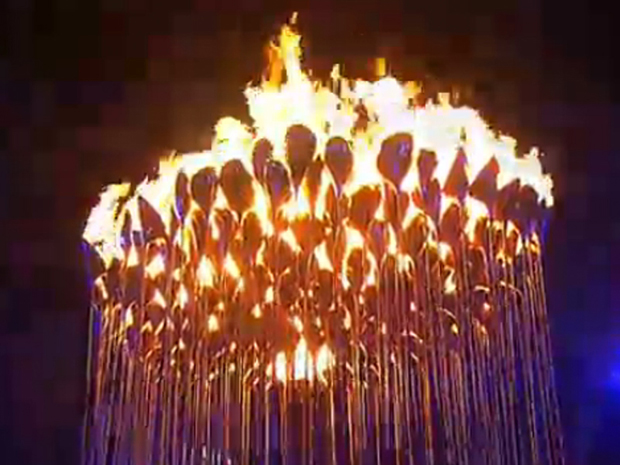
Thomas Heatherwick 'huge relief' at Olympic opening
Designer reveals the Bond style secrecy around the planning and creation of 'Betty' - the Olympic cauldron
Thomas Heatherwick has spoken of his "huge relief" as his Olympic cauldron 'Betty' - the affectionate nickname given to what became the centrepiece of the Olympic opening ceremony on Friday night - caught fire and rose towards the sky just as he planned.
The cauldron represents the "coming together in peace" of each of the 204 competing countries. Made up of 204 flames in copper petal-like bowls mounted on stems, when lit by the seven young torchbearers it rose to merge into one huge flame.
Heatherwick's construction was among the biggest and best kept secrets of the opening ceremony. The event's scriptwriter Frank Cottrell Boyce revealed this morning that people working on the project referred to the cauldron by the name Betty. "She was named after the executive producer's dog. And so we were liable to get strange messages about 'going to visit Betty' and 'what to do if Betty malfunctions'," he said.
"We were aware that cauldrons have been getting bigger, higher and fatter as each Olympics has happened," Heatherwick said. "And we felt that we shouldn't try to be even bigger than the last ones."
"We were thinking about this incredible event with these 204 nations coming together, a peace somehow, even though [it is part of] a sporting challenge. It didn't feel enough to just design a different shape of bowl on a stick, and so we were trying to think from the most fundamental where - as much as how - as much what, and working with Danny [Boyle] on who would make this happen."
Heatherwick said that the concept of having no cauldron, "the stadium having no 'thing' in it", was how he approached the design. He revealed that he was aiming for "these 204 very small, humble objects where they come together and rise, rear out of the surface of centre the stadium". When the first of 10 rings had risen into place, the last one was lifting and coming together.
"So it was like a dandelion seed being blown - but it seemed to work, which was a huge relief!" he said. The copper petals were made by traditionally skilled craftsmen of the kind who used to roll sheet metal to make body parts for car makers such as Bentley, according to Heatherwick.
"It is like the biggest gadget that anyone can make in a shed but this shed is the most sophisticated shed in Harrogate. It was like the Bond gadget workshop," Heatherwick continued. The designer said that at the end of the Games, each nation would be given its petal to take away and the cauldron would "dismantle itself" and disappear.
"The idea is that this cauldron will dismantle itself and come back to the ground. These pieces will be taken away by the National Olympic Committee for each country. They will be these heated elements, maybe they will get buffed, but everyone will have a piece."